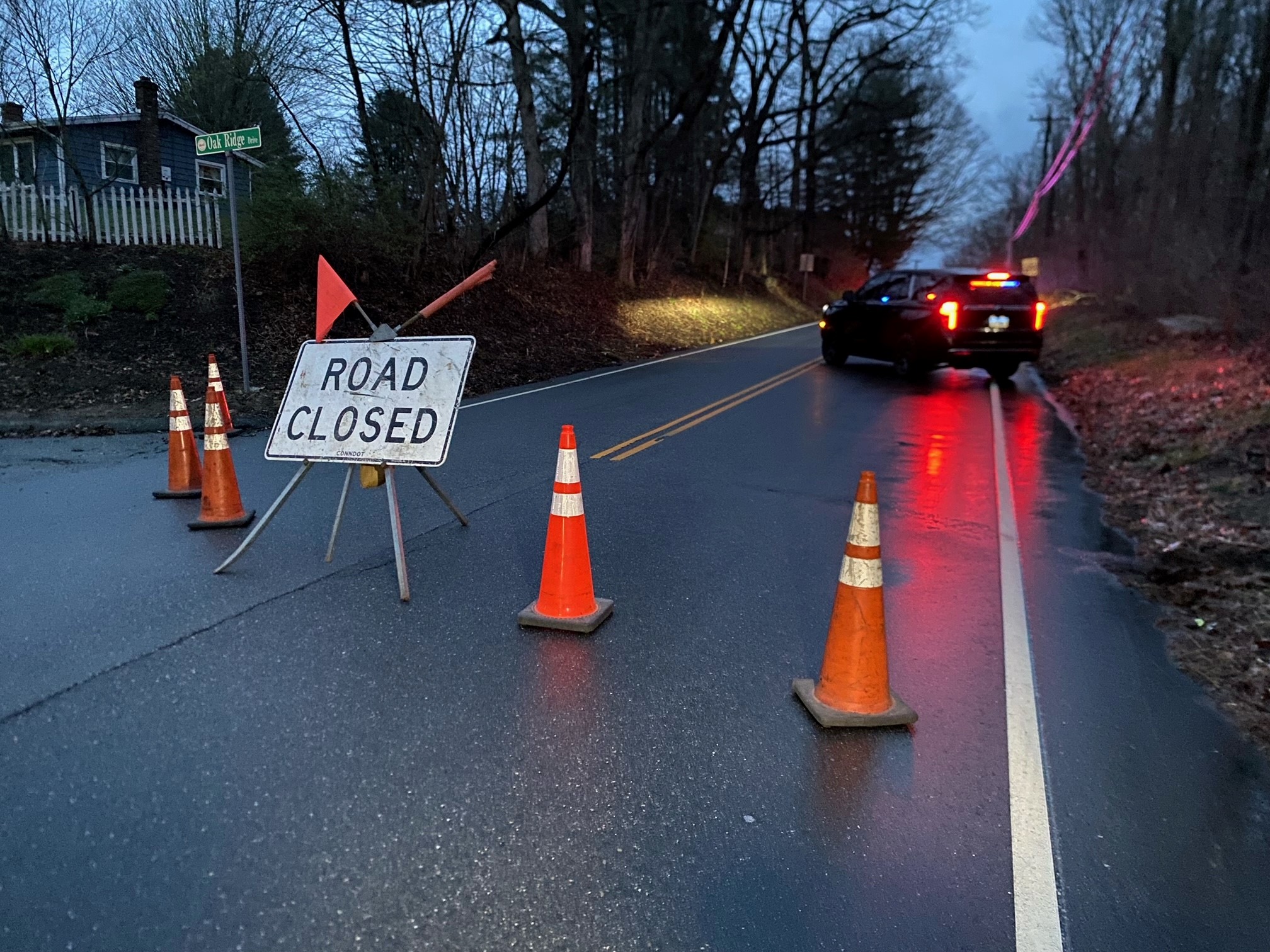The power has gone back on, but some Connecticut residents have been lacking confidence in the electric utilities serving most of the state.
This, after a tropical storm caused outages lasting a week or more in some cases, right after sizeable rate hikes went into effect.
For Marsha and Jerry Tomlinson of Bristol, losing electricity is no laughing matter due to their medical issues.
The Eversource customers said they experience outages often enough that they got a generator.
“If you’re gonna charge me this much, I want good service,” Marsha Tomlinson said.
Figures from 2018 from the U.S. Energy Information Administration ranked Connecticut as having the highest average electric bills in the continental U.S.
When Connecticut opened competition on the supply side of your bill two decades ago, that, along with low fuel prices, stabilized and even lowered what you pay for the electricity you use.
Local
It’s one of the reasons the supply side of your bill is now less than the delivery portion, according to Eversource.
United Illuminating (UI) customer Mike Kalafut noticed the same thing on his bill.
“I was using roughly around $56 of electricity and the delivery charge is $115 so they’re nearly doubling the charge to deliver electricity,” Kalafut said.
The Public Utilities Regulatory Authority (PURA) confirms rates on the delivery side of your Eversource bill went up July 1.
A transmission charge rose about 46% and a federal congestion charge went up approximately 92%, each adding roughly $10 to $20 per month to your electric bill, depending upon usage.
NBC CT Investigates found what appears to be an even bigger reason you’re seeing a jump.
In 2017, regulators granted Eversource increases to something called a distribution charge. It is the largest item on the delivery side of your bill.
It went up roughly 56% in 2018, another 6% last year, and 5% more this year.
“This has been going on little by little and now all of a sudden it’s a lot,” Marsha Tomlinson said.
Eversource said the recent jump in bills is partially due to people working and vacationing at home due to coronavirus, and typical increased usage in the summer months.
“The supply and delivery charges are inter-related—the more energy a customer uses, the higher both the supply and delivery portions of the bill will be,” the utility explained.
The rate hikes raised enough concern that state Sen. Norman Needleman, co-chair of the legislature’s energy and technology committee, was among state leaders prompting the rollback of the two new increases temporarily.
“There’s an impact to the poorer ratepayers where the $50 a month may not matter to me but to somebody who lives very paycheck to paycheck, it’s going to have a big impact on them,” Sen. Needleman said.
When it comes to reliability, our analysis of the most recent 2018 federal data, including major event days, ranks Eversource in the bottom 10% of investor-owned utilities for two of the three measures of outages and their duration. United Illuminating is in the middle of the pack.
State Sen. Tony Hwang used to sit on the legislature’s energy and technology committee and represents people in Westport -- Eversource customers who in some cases waited more than a week after the tropical storm to get power back.
“What happens when the next storm comes? We’re just not prepared,” Hwang said.
The combination of the highest bills in the continental U.S. and slow storm response complaints has regulators and legislators talking about tying profits utilities earn to performance, something done in other states, according to the chairman of PURA.
“I think that’s the subject of one of the inquiries that we have going on at PURA is how we appropriately set those metrics and hold the utilities accountable in major outages,” said PURA chairman Marissa Gillett.
Right now, PURA allows Eversource and UI to earn what’s called a "return on equity" in the 9% range, which is about average, according to Ryan Katofsky, managing director of Advanced Energy Economy, a clean energy trade association.
“What they’re guaranteed effectively is the opportunity to earn that return on the equity investment that they make. That does not necessarily guarantee them a specific profit at the end of the day,” Katofsky said.
Both Eversource and UI have stated they look forward to hearings which begin next week so they can tell their side of the story. They note everything they have done has been either approved by or is at the direction of state regulators and legislators.
In a statement, UI said:
“We recognize that customers’ life and work habits are changing during these challenging times, and that this is affecting their energy usage and costs, particularly during the hot summer months. We offer programs and services to help customers understand and manage their energy usage, and we will work with customers with high bills and back balances if they contact us. UI has not sought to adjust its distribution rate — the portion of the total rate that it controls — in several years, and has not filed for any future distribution rate adjustments.”
Eversource responded to our questions with an explanation:
A customers’ energy bill is made up two parts:
- The supply charge, which reflects the straight cost of the energy that customers’ use in their homes. As a state regulated delivery company, we purchase electricity from wholesale suppliers on behalf of customers on our Standard Service supply option and pass the cost directly to them. This supply charge changes twice a year, based on the direct cost of power that we purchase. We make no profit on this portion of the bill. Customers also have the option of purchasing their energy directly from a third-party supplier
- The delivery charge, which is made up of several fees and charges that reflect Eversource’s costs to serve customers. It includes costs associated with our “transmission” system, which moves power large distances at high voltages from power plants to customers’ homes or businesses, and costs of maintaining and modernizing the local network of poles, wires and other equipment to a customer’s location. It also includes costs the company is required to include by state policy makers for initiatives like Energize CT energy efficiency programs, and the costs of buying power from third-party renewable energy producers, and more recently, the Millstone Nuclear Power Plant.
- The supply and delivery charges are inter-related—the more energy a customer uses, the higher both the supply and delivery portions of the bill will be.
- Eversource’s rates are reviewed and approved by the Connecticut Public Utilities Regulatory Authority.
Why is the Supply portion of the bill less than the Delivery portion now?
- In past years, the supply portion of the bill was larger than the delivery part. That is no longer the case. Wholesale energy costs today have dropped significantly, and Eversource is paying less for the power it purchases to serve customers on Standard Service. This is why the supply portion is now less than the delivery portion.
Why have my June and July bills increased so much?
- There are two factors at play. First, many more customers are working and vacationing at home this year due to the pandemic. As a result, they are using more electricity to operate computers and home electronics, along with other appliances. Second, the summer months are historically warmer, and usage tends to increase. Customers are relying on fans, air conditioners, and other appliances to keep them cool and comfortable—and may be running them more because they are home.
What can I do to lower my energy bill?
We understand and share the concerns customers have expressed regarding recent higher than normal bills and recognize it represents an unexpected and distressing increase during an already challenging time. Customers are encouraged to visit Eversource.com and use the Energy Savings Plan tool. It allows a customer to answer a series of questions and see a customized breakdown of their energy use so they can see opportunities to lower their energy use and save money. There also are several energy efficiency programs and services the company offers that can help customers reduce their energy use. We also offer a variety of payment plans to help customers. Customers can visit Eversource.com or call 800-286-2000 to learn more.
Background on rate of return from PURA
Utilities are capital intensive businesses. We regularly borrow money to finance investments in the electric infrastructure. Like a consumer, being a financially sound company allows us to borrow money to finance investments at a lower cost. Eversource has one of the highest credit ratings in the industry, and can, therefore, secure lower financing rates which is a benefit to all customers.



